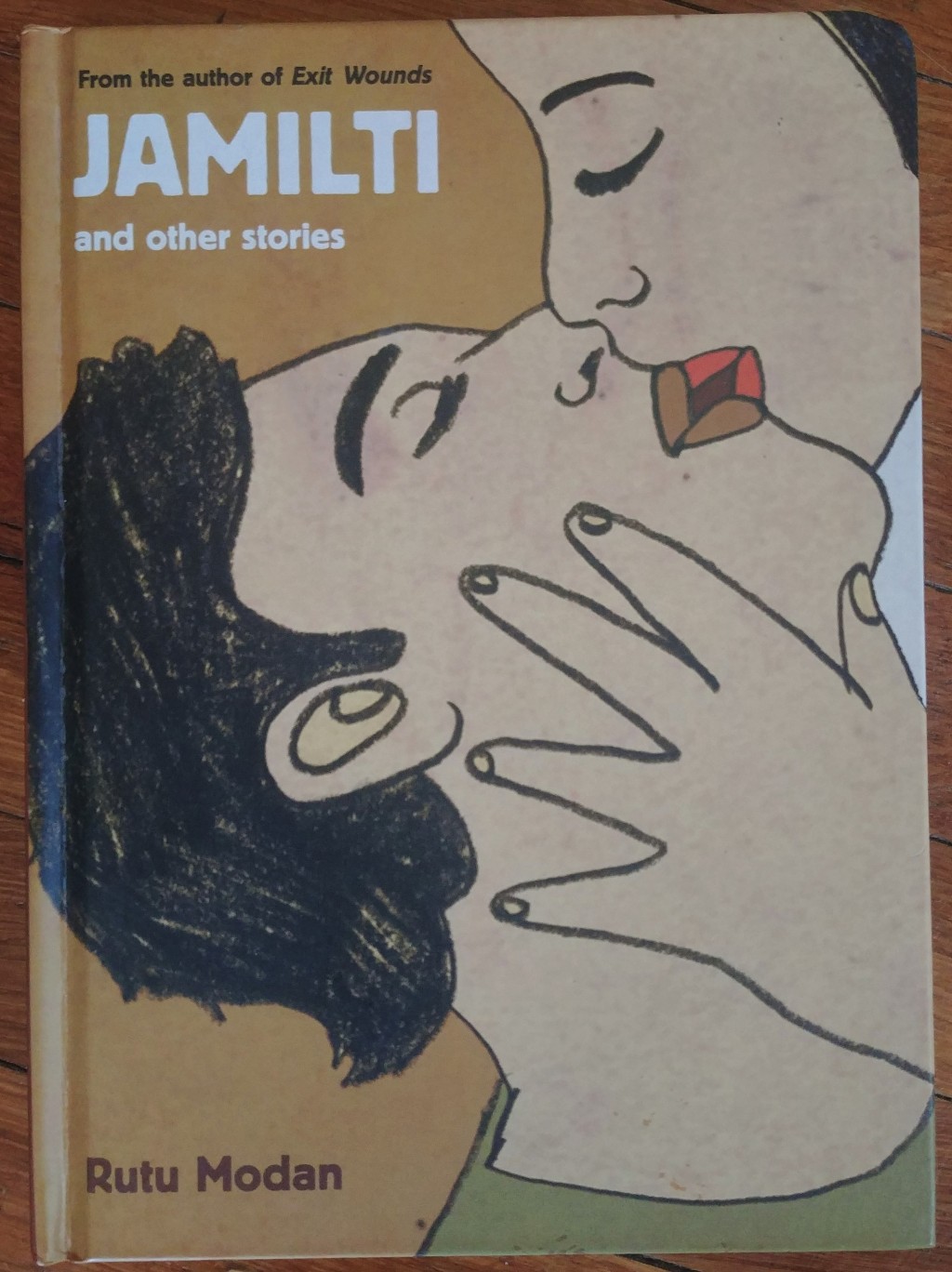Graphic novel published in 2009. Stories written by Rutu Modan between 1998-2008.
March 9, 2022

“Jamiliti” is the first story in Modan’s collection and it is, by far, one of the most affecting. The story focuses on Rama, a woman who is in the middle of preparing wedding arrangements with her self-absorbed fiancé, Guri. Increasingly, we see that Guri is frustrating and inattentive to Rama, so much so that she leaves a cab just before witnessing a terrorist attack at a local café.
In her author’s note, Modan says writing the book “was a process of development … to realize that real life is bizarre and grotesque enough to base a story upon.”
There’s an obvious parallel to be drawn between the explosion and the inter-marital conflict. However, I think Modan focuses instead on that bizarre-ness of real life, the very fact that a parallel can be drawn between two unrelated events.
It can be said that the illustration style of the collection’s first few stories are grotesque because they are uncomfortable, because they are not what we may expect of graphic novels: clean lines, tidy boxes, neat and self-satisfying stories. Readers may presume, as I do, that “Jamiliti” was one of Modan’s earlier stories featured in this collection. Based on the sparse lines and sometimes incomplete color fills, the illustration is sparse but nevertheless evocative and, as one moves through the collection, Modan’s growing skill becomes more and more evident. This is not a fault by any means; Modan’s intentions remain clear in the way she’s drawn each scene. Modan is an artist keen on representing the imperfections of life, its unexpected twists and turns, and the way it endlessly, tirelessly, catapults us forward.

As the collection progresses, the art becomes more refined and careful. In “King of the Lilies,” the muted color palette connotes the historical past on which the story itself is based: Sweden in the early 20th-century. Written in 2007, “King of the Lilies” is of a place that reflects Modan’s own disbelief, back when “[she] still believed that only in far away places … could crazy stories happen.”
In the story, a plastic surgeon falls for an orphaned daughter who, after a series of events, goes missing. Tortured by a twisted adoration he holds for the much-younger orphan, the Doctor tweaks his practice in a series of increasingly bizarre but pleasing (to himself and eventually his clients) circumstances. That is, he begins creating noses and cheekbones and smiles to match the face of the one he pines for.
The orphan, who remains unnamed and never speaks, becomes significant only as a collection of body parts. Modan, attuned to this and keen with her artistry, turns the orphan (or, really, anyone of the women who come to the Doctor) into a paper doll.

You can style her hair and her nose, you can choose what she holds in her hand and which type of cloth covers her breast. In doing this, Modan emphasizes how superficial and obsessive the Doctor’s treatment of the orphaned woman is, highlighting too the reality of what it means for a male plastic surgeon to abuse his profession by changing the way his female clients look so that it pleases him. The male gaze, sharpened into a scalpel.
Modan is an illustrator and story-teller with much to share and much to reveal. After reading a review of this book in the New Yorker, I went ahead and ordered Jamiliti and Other Stories immediately. I recommend you all do the same.
Sincerely, Mad Girl

Leave a comment